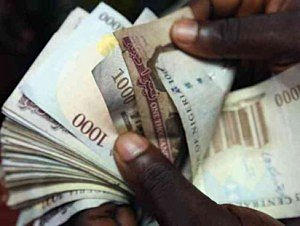 Foreign
Direct Investments (FDI) into Nigeria and other African countries
increased by $151.6 billion from 2000 to 2013. This was one of the
highlights of a report published by the Institute of Chartered
Accountants in England and Wales (ICAEW). Titled, “Economic Insight:
Africa Q3 2015 report”, the report was commissioned by ICAEW and
produced by the Centre for Economics and Business Research Ltd (CEBR).
Foreign
Direct Investments (FDI) into Nigeria and other African countries
increased by $151.6 billion from 2000 to 2013. This was one of the
highlights of a report published by the Institute of Chartered
Accountants in England and Wales (ICAEW). Titled, “Economic Insight:
Africa Q3 2015 report”, the report was commissioned by ICAEW and
produced by the Centre for Economics and Business Research Ltd (CEBR).Among other things, it provides a snapshot of Africa’s economic performance focusing specifically on Kenya, Tanzania, Ethiopia, Nigeria, Ghana, Ivory Coast, South Africa and Angola. According to the report, and drawing on estimates prepared by the World Bank, the total level of external financial inflows into Africa has increased from $40.4 billion in 2000 to $192 billion in 2013. This is largely attributed to the inward FDI from China with investment mainly going into primary resource sectors and infrastructure.
Michael
Armstrong, Regional Director, ICAEW, Middle East, Africa and South
Asia, said: “China has approached African economies in a very different
way to Europe, focusing less on official aid and engaging more
aggressively through foreign direct investment and trade. This has been a
game changer for the development industry, forcing European countries
to rethink their strategy of connecting with the continent.”
At
turn of the century, private finance constituted 62 per cent of African
economies’ total inflows. Today, that number has risen to over 70 per
cent, signalling a shift in investors’ perceptions of the market.
Thanks
to resource wealth, West Africa and Southern Africa are leading the
way, attracting the majority of FDI; though East Africa is catching up.
This is partly thanks to efforts for closer integration in the East
African Community (EAC), which has involved harmonising investment
regulations across the region and reducing red tape.
Much
of the non-resource focused growth can be attributed to African
infrastructure projects and investment in consumer-oriented industries
including: rail projects in Uganda, Nigeria and Zimbabwe; Ethiopia’s
textile, real estate, automobile and rail industries; Eritrea and
Tanzania’s shipping industries; and Kenya and Rwanda’s real estate
industries.
According
to Danae Kyriakopoulou, ICAEW economic adviser and the report’s author,
“While economic development naturally varies across the continent,
Africa’s regional outlook as a whole remains bright with a number of
projects expected to bolster growth.”
Among
other things, the report also shows that: Nigeria is expected to
experience growth in the medium term helped by higher oil prices and the
implementation of reforms; Annual GDP expansion of 8.5 percent is
expected for Ghana by 2017; Ivory Coast should remain on a high growth
path into 2016; Growth in Angola is expected at 4 percent; The pace of
GDP expansion in South Africa is forecast to see a gradual pick-up over
the next three years.

No comments:
Post a Comment